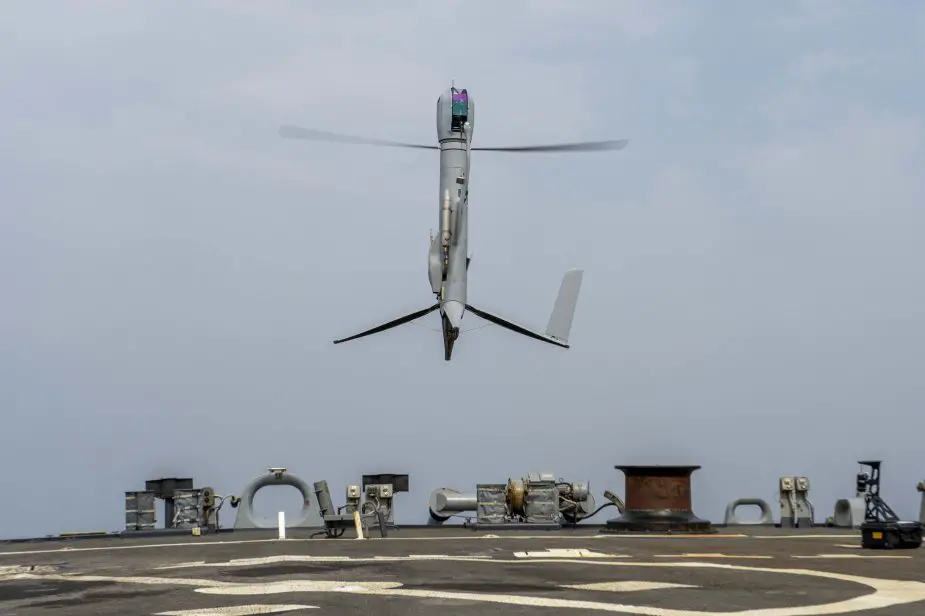Breaking news
UK: Royal Navy completes naval exercise IMX 2023 in Middle East.
According to information published by the UK MoD on March 21, 2023, the second-largest naval exercise in the world has ended across the Middle East with Royal Navy ships and sailors pushing technological boundaries and sharing their expertise.
Follow Navy Recognition on Google News at this link
 Aerovel Flexrotor Unmanned Aircraft System. (Picture source: UK MoD)
Aerovel Flexrotor Unmanned Aircraft System. (Picture source: UK MoD)
All the UK’s Gulf-based ships, supported by expert dive/bomb disposal teams flown out from the UK, Royal Marines boarding and search specialists, drone operators, and medics, were committed to the huge International Maritime Exercise.
In size and scale, IMX – which ran for 18 days across the vast expanse of the Red Sea, Indian Ocean, and the Gulf – was billed as second only to the huge, long-standing, naval exercise run by the Americans in the Pacific.
More than 7,000 personnel from 50 nations with two dozen ships and a similar board and search teams committed to IMX and, although the focus was principally on naval warfare, the RAF also provided aerial support from Cyprus.
Participants tackled potential threats as varied as terrorism, smuggling, sea mines, and aerial drone attacks.
There was also a strong emphasis on remote and autonomous systems and how they will be integrated. The exercise explored the envelope of existing kit, with 700X Naval Air Squadron operating the Royal Navy’s dedicated crewless Puma drone as a flying ‘spotter’.
Some 30 different autonomous systems were in action during IMX. In the Gulf of Aqaba, Jordan, a dummy ‘casualty’ was transferred from a ship to medics ashore using a MARTAC T-38 Devil Ray unmanned surface vessel – the first time a drone has been used in a medical evacuation training scenario.
For the first time in the Middle East, the world’s longest-range electric aircraft, the K1000ULE surveillance drone – capable of missions lasting more than one day – was given a run out.
For the Royal Navy, support ship RFA Cardigan Bay served as the floating testbed for a string of technology trials, led by the Royal Navy’s new Mine Hunting Capability (MHC) which is a remote/autonomous system capable of conducting many roles currently performed by existing Hunt and Sandown-class minehunters.
The idea is to keep personnel safely at arm’s length from any mine danger area, allowing them to search, locate and finally neutralise mines from a safe distance.
In the Gulf, the trials are spearheaded by Royal Navy Motor Boat Harrier, delivered just a few weeks ago as part of MHC, and operated by the Mine Threat Exploitation Group.





























